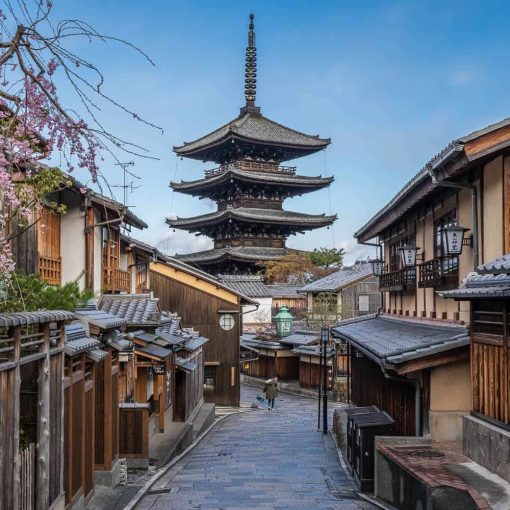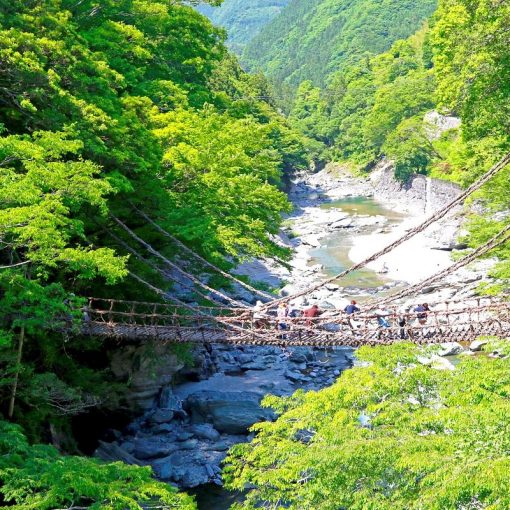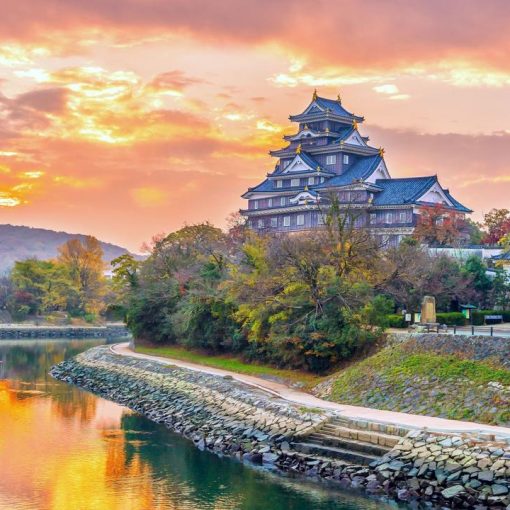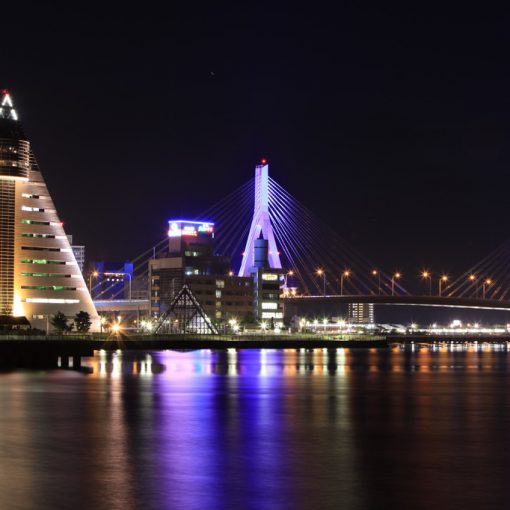Cradle of culture. Fukuoka Prefecture has been the center of the Kyushu region since the 7th century.
The history of the ancient capital of the Kyushu region – the city of Dazaifu – has 500 years. There are about 6,000 plum trees of 200 species with red and white flowers, about 30,000 irises of 50 species, and other flowers and plants at Dazaifu Tenmangu Shrine. Tammangu Temple is dedicated to the deity who helps to achieve academic success, so there are always many visitors here, especially students who are preparing for the entrance exams. There are also other scenic spots in the prefecture, such as Senbutsu Limestone Cave (National Natural Treasure) and the world’s first amusement park “Space Park” dedicated to space. Fukuoka city, also known as Hakata.
Every summer, Hakata Dontaku, a colorful harbor festival, takes place here in the summer. Children in traditional costumes walk through the city; adults in beautiful clothes on the streets perform the te-odori dance (dance with empty hands). This event brings together more than 580 dance groups and about 31,000 citizens, and up to 2 million people come to watch the holiday. Let’s take an underground journey through the caves of Hiraodai Nature Park in Fukuoka Prefecture. You can go here right along the bed of an underground stream.
Dazaifu is a small picturesque town

Nestled in the forested mountains of Fukuoka Prefecture, on the island of Kyushu. Only 70 thousand people live here, but the city has a very rich history, which is why the National Museum of Kyushu works here. Interestingly, during the Heian period (about a thousand years ago), Dazaifu served as a place of exile for high-ranking courtiers.
This prefecture in northern Kyushu appreciates the beautiful and the intricate, whether it’s traditional textiles, fine wooden home decorations, or old-fashioned ceramics. The elegant style of Fukuoka is formed from diversity – both natural and man-made.
Paradoxically, the largest city of the island, much quieter and, let’s say this word, authentic in the sense of preserving traditions and a relatively low number of borrowings from European pop culture, for the Japanese, Fukuoka, as well as the entire island of Kyushu, has always been considered a kind of “window into the world”: due to its geographical position, it served as an “entry point” to the country for travelers both from the neighboring Asian giants of Korea and China, and for the West.
However, even if historically it was so, the current state of affairs is still somewhat different – Sino-Korean relations are still extremely strong, while the European expansion, which is gradually more and more visible in Tokyo, the traveler will not feel here. At least for now, globalization is not dormant, so it is quite likely that hunters for the “real” or, as experienced wanderers say, “non-pop” Japan should hurry.
At the same time, this region is extremely friendly towards tourism – with transport, hotels and guesthouses, restaurants and street food, attractions, outdoor activities, wellness practices and the entertainment industry in Fukuoka, things are more than excellent.
One of the largest temples in Fukuoka
One of the largest temples in Fukuoka Prefecture, Dazaifu Tenmangu is located in the town of Dazaifu, which is easily reached by bus in a leisurely half an hour. A complex of several buildings appeared here as early as the 10th century and was erected over the grave of Sugawara no Michizane, a once very respected and later deified scientist, poet and politician who lived in the Heian era.
In the 16th century, the complex was rebuilt, primarily due to a fire, so most of what appears to visitors today dates from this period. In addition to the sanctuaries proper, the complex also includes two ponds, a picturesque bridge, a treasury and a huge number of plum trees, which, like sakura, bloom luxuriantly in early spring or even at the end of February, when a holiday is held here (on the 24th-25th, to be exact). flowering of these trees.




